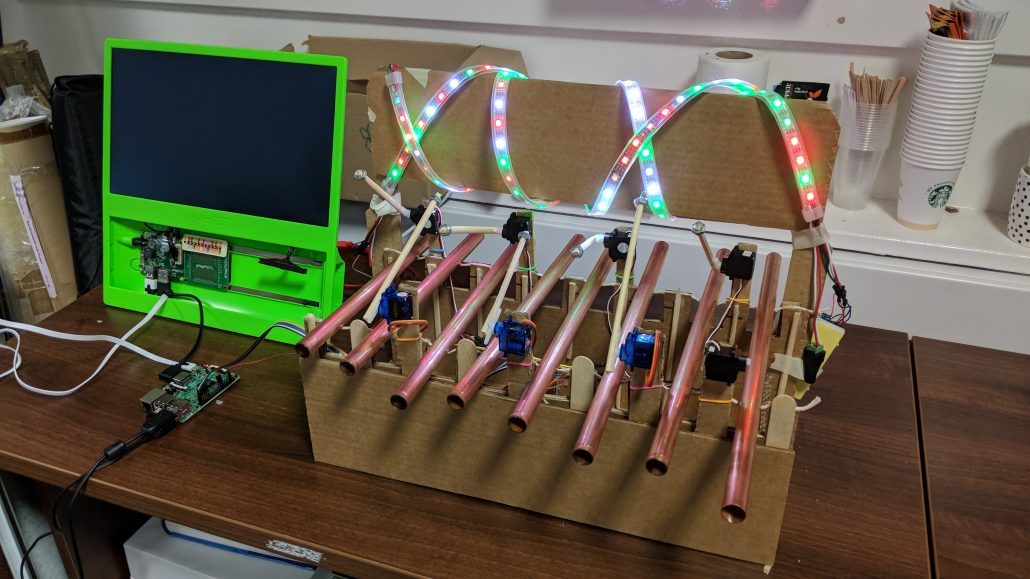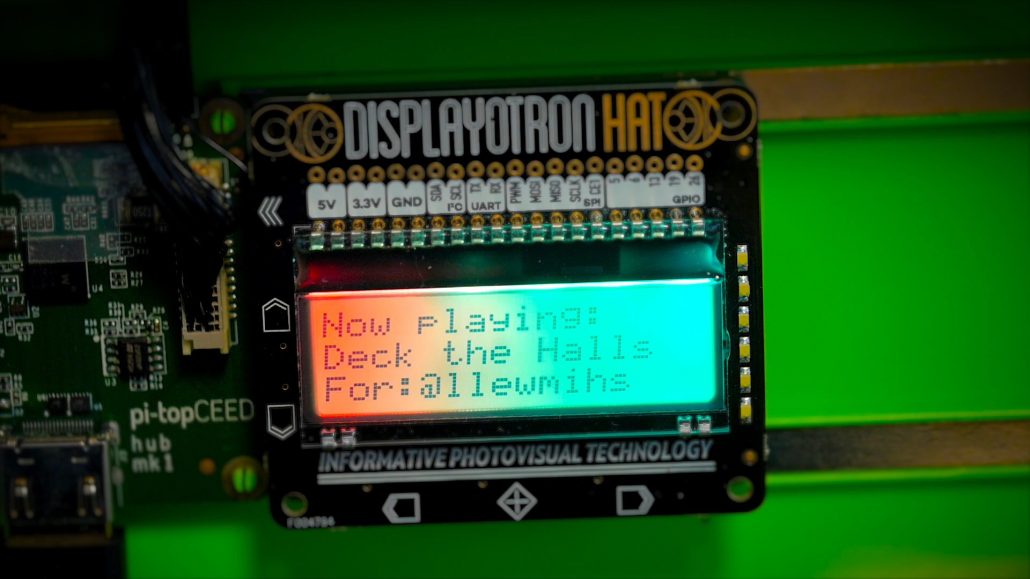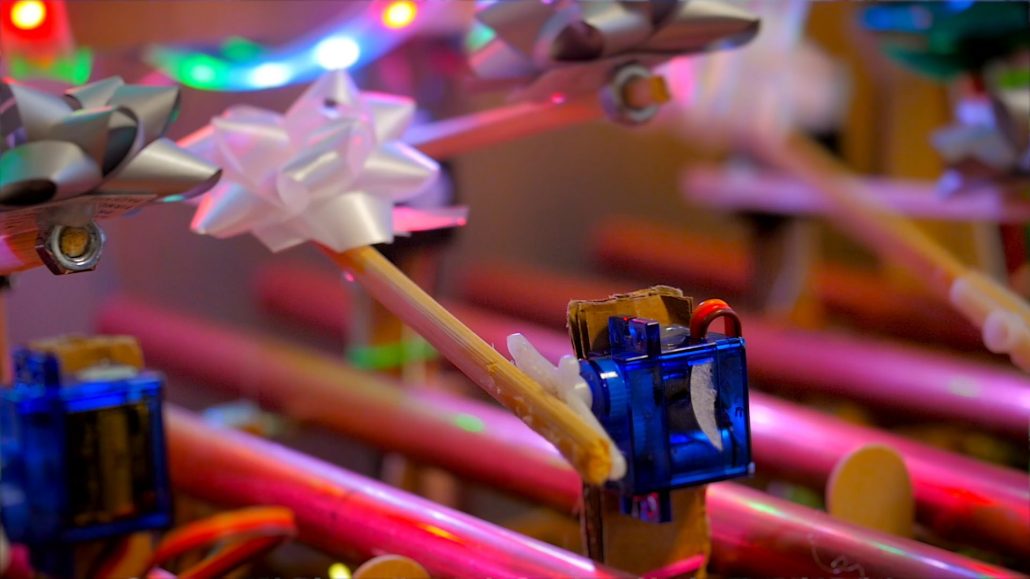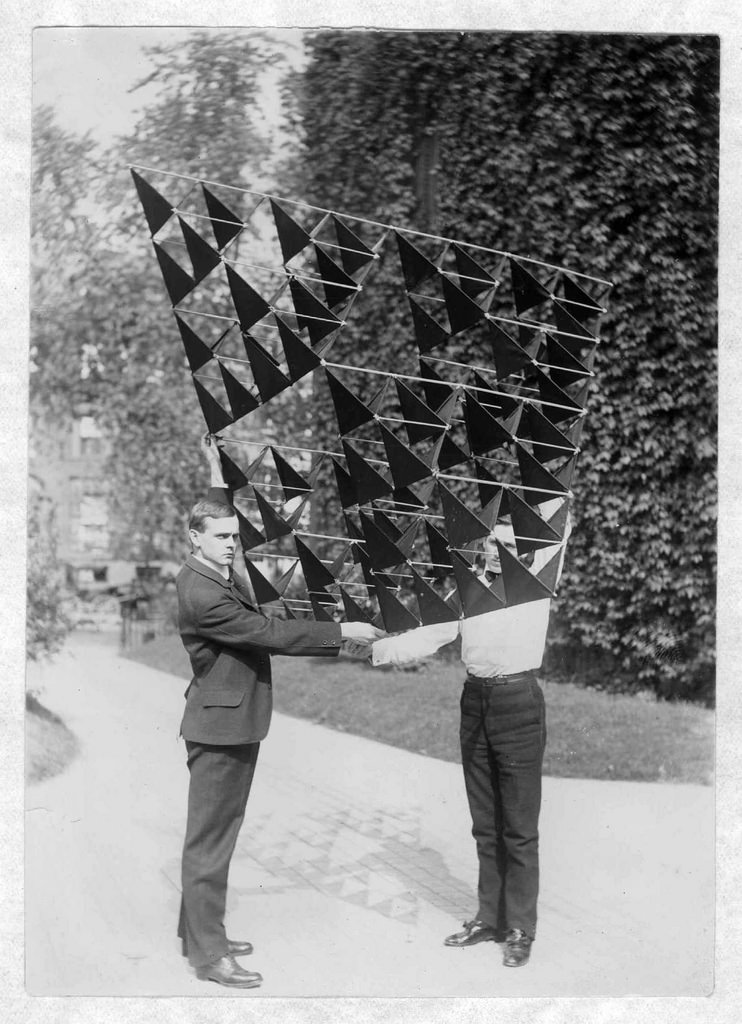Phew! We’re slowly recovering from a couple of crazy days at the Big Bang North East. We spun patterns and collected hopes and dreams for future tech with the Technology Wishing Well; explored the universe with our space-themed show; and launched ping pong balls with hundreds of catapults in our Go Ballistic! workshop.
We had about 18 booked groups through the workshop, and managed to squeeze in a few more schools too. We’re sorry if we had to turn you away, we were crazily popular. Apart from anything else, there are no more decent plastic spoons to be had anywhere in central Newcastle. We bought (and used) them all!
So here’s the moment you’ve all been waiting for, the grand reveal of the final standings on the leaderboard:
Click the image to see it larger, but here’s the leading portion of results of 4m and above:
- Longest distance achieved: Royal Institution, 5.80m. However, see below!
- Gosforth East Middle School (yr. 7): 5.00m (secondary winner!)
- Academy 360 (yr. 8): 4.80m
- Monkwearmouth (yr. 7), Washington (yr. 8): both 4.65m
- Monkseaton Middle School (yr. 6), Bede Academy (6JRA): 4.40m (joint primary winners!)
- Farringdon: 4.40m
- Gosforth East Middle School (yr. 6): 4.30m
- Heworth Grange: 4.10m
- Southlands A: 4.00m
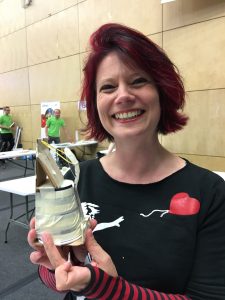
Dr. Emma J King of the Royal Institution with her redesigned catapult, which achieved a throw of 5.80m from a single elastic band.
Congratulations to the entrant from the Royal Institution in London, Emma J King, pictured left. Emma’s throw of 5.80m was the longest we saw on the day. The eagle-eyed amongst you will notice that her catapult design was dramatically different to anyone else’s, but you’ll also notice that Emma isn’t quite a school student. In fact she has a PhD in physics, and neither we nor she thought it was entirely fair to count her remarkable score against everyone else’s. Hence: she’s disqualified.
Our Secondary winners therefore remain Gosforth East Middle School (yr. 7), who landed a remarkable 5.00m to huge jubilation around the launching table. Academy 360 (yr. 8) were worthy runners-up, spending over an hour trying all manner of different approaches to eek out the next twenty centimetres they needed. Valiant determination!
Sterling performances also from Monkwearmouth yr. 7s and Washington yr. 8s, both groups with impressive bests of 4.65m.
Snapping at their heels were our joint Primary winners Monkseaton Middle School (yr. 6) and Bede Academy (class 6JRA), both at 4.40m.
We’ll be sending both primary and secondary winners suitable trophies, just as soon as they’ve emerged from our 3D printers.
Well done all, and our thanks for your enthusiasm and ideas. We had a blast running the workshop, and we hope you enjoyed it as much as we did. One of my favourite moments was when a chap from the Army was standing nearby for a good half hour, watching a couple of groups develop, test, and iterate. I wandered over and invited him to make his own catapult. “Not a chance,” he said, “I wouldn’t get close to what this lot are doing, and I’d never live that down: I’m Royal Artillery.”
Wise man.
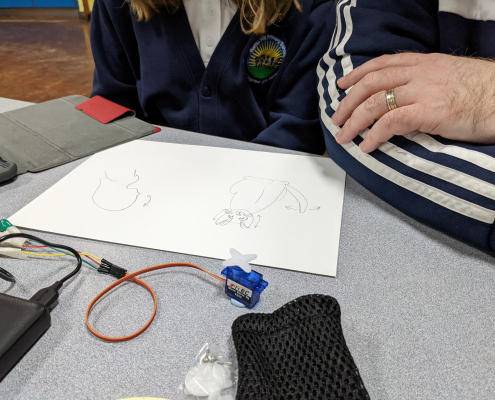 In the very first week one family made the dog in the picture above, which wags its tail when it’s happy and sags rather pathetically when sad. In subsequent weeks families have found out how to code more behaviours into their Connected devices, and explored different mechanisms they might use as they think through what their ultimate creations might be. Here’s a family sketching out a design for a cat puppet, and thinking about how it might move.
In the very first week one family made the dog in the picture above, which wags its tail when it’s happy and sags rather pathetically when sad. In subsequent weeks families have found out how to code more behaviours into their Connected devices, and explored different mechanisms they might use as they think through what their ultimate creations might be. Here’s a family sketching out a design for a cat puppet, and thinking about how it might move.
